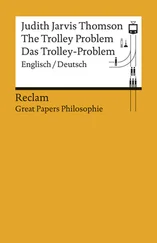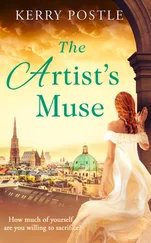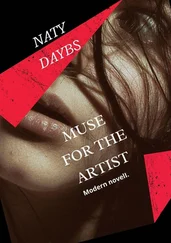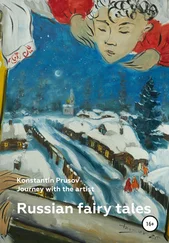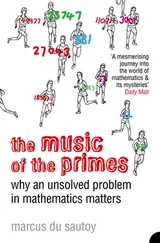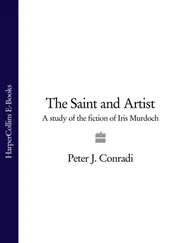COPYRIGHT
Collins, an imprint of
HarperCollins Publishers
1 London Bridge Street
London SE1 9GF
www.harpercollins.co.uk
First published in Great Britain by Collins 2001
Copyright © The Artist Magazine, 2001
Editor: Geraldine Christy
Designer: Penny Dawes
The Artist Magazine asserts the moral right to be identified as the author of this work.
COVER: Detail from Cherries in Porcelain Bowl , Anuk Naumann.
DETAILS (FROM THE TOP): San Rocco, Venice , Winston Oh; Flowers and Hat in Lamplight , John Lidzey.
The text and illustrations in this book were previously published in The Artist Magazine.
A catalogue record for this book is available from the British Library
All rights reserved under International and Pan-American Copyright Conventions. By payment of the required fees, you have been granted the nonexclusive, nontransferable right to access and read the text of this e-book on-screen. No part of this text may be reproduced, transmitted, downloaded, decompiled, reverse-engineered, or stored in or introduced into any information storage and retrieval system, in any form or by any means, whether electronic or mechanical, now known or hereafter invented, without the express written permission of HarperCollins e-books.
HarperCollinsPublishers has made every reasonable effort to ensure that any picture content and written content in this ebook has been included or removed in accordance with the contractual and technological constraints in operation at the time of publication .
Source ISBN 9780007165711
Ebook Edition © JANUARY 2015 ISBN: 9780008108472
Version: 2015-01-05
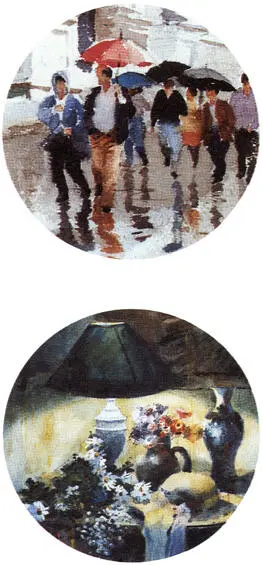
CONTENTS
Cover
Title Page
Copyright
Introductionby Sally Bulgin(Publishing Editor, The Artist )
| 1 Subject Spotlight |
Gerald Green |
| 2 Centre of Interest |
Jackie Simmonds |
| 3 Creating Depth |
John Mitchell |
| 4 Seven-minute Skies |
Winston Oh |
| 5 The Longer View |
Jackie Simmonds |
| 6 Floral Still Lifes |
John Lidzey |
| 7 Sense of Movement |
Peter Partington |
| 8 Clues & Illusions |
Richard Pikesley |
| 9 Tonal Strength |
John Mitchell |
| 10 Soft Garden Colours |
Jackie Simmonds |
| 11 Painting Skies |
John Lidzey |
| 12 Figures in Paintings |
Gerald Green |
| 13 Woodland Scenes |
Jackie Simmonds |
| 14 Shapes & Rhythms |
Peter Partington |
| 15 Unity in Still Lifes |
Anuk Naumann |
| 16 Children at Play |
Jackie Simmonds |
| 17 Illusion of Light |
Gerald Green |
| 18 Life in Landscapes |
Winston Oh |
| 19 Landscape Greens |
Tom Robb |
| 20 Street Life |
Gerald Green |
| 21 Broken Colour |
Jackie Simmonds |
| 22 Control of Detail |
John Lidzey |
| 23 Design & Movement |
Gerald Green |
| 24 Rescue Strategies |
Hilary Jackson |
Keep Reading
About the Publisher
INTRODUCTION
The Artist’ s Practical Problem Solver has proved to be one of the most popular, helpful and longest-running series in the UK’s The Artist magazine (first published in 1931). The aim of this ongoing series is to tackle students’ most common painting problems by posing their questions to a variety of top-class artist-tutors, who are invited to offer advice and possible solutions to each problem through down-to-earth instruction, demonstrations and practical ideas.
As the series began to unfold in each monthly issue of the magazine, following the appearance of the first article in the January 1999 issue, I was asked by a growing number of readers about the possibility of developing the Practical Problem Solver series into book form, as a valuable reference guide. Happily, HarperCollins also thought that this would be a good idea: hence the collaboration between The Artist magazine and the book publisher to produce this new, practical art book with answers to the most frequently asked questions from the series.
You will find a host of different problems tackled here, of special value to painters with an interest in traditional subject matter: the basics of deciding on a good subject for a painting; how to convey depth and movement effectively; ways of coping with greens, painting skies, dealing with foregrounds; how to produce convincing figures and introduce them successfully into paintings; tackling backgrounds in still-life compositions; plus many other aspects of painting.
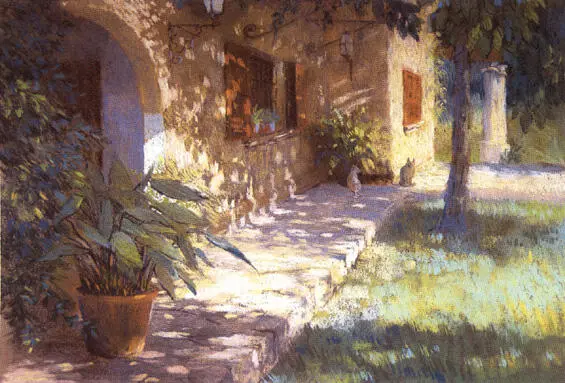
Jackie Simmonds,
GARDEN SHADOWS, C’AN GAURI
pastel on board, 46 x 66 cm (18 × 26 in)
John Lidzey,
STUDIO WINDOW IN SUNLIGHT
watercolour, 43 × 28 cm (17 × 11 in)
Each problem has been carefully considered by well-known artist-tutors, including Gerald Green, John Lidzey, Peter Partington and Jackie Simmonds, who offer sound advice based on their own approach to the subject in hand. The result is a cornucopia of inspired ideas to help you overcome difficulties you may have encountered already during your painting life; maybe those that you are struggling with at the moment; or situations that you might very well face in the future. Whatever stage you are at I know that you will find the encouragement and advice you need here, helping you to progress, and enjoy your painting.
Publishing Editor, The Artist
1
SUBJECT SPOTLIGHT
How do I decide what makes a good subject for a painting?
Answered by: Gerald Green
Talk to any gallery and you will invariably find that subject matter has a major influence on the picture-buying public. But to the artist the relevance of a subject is that it is simply the vehicle through which to express yourself at the time.
To begin with, what you choose to paint will often be influenced by the work of other artists whose particular painting style you admire. Or there may be a tendency to search for idealized or picturesque images that fulfil the preconceived notion of what you think a subject ought to include.
There may also be a desire to paint personal favourites that possess an emotional attachment or contain an element of nostalgia. The painting process then becomes an exercise in producing a ‘nice’ picture. This approach should always be avoided since the solution to deciding what might make a good subject lies not so much in what you choose but more importantly in what will be your response to it and how you are able to interpret it.
Читать дальше




